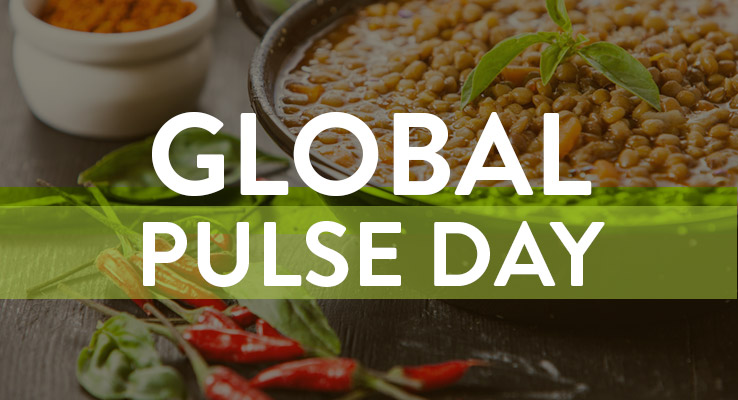|
DRAWING A BETTER WORLD
|
|
FIND OUT HOW
TO HELP US
PUSH TO PLAY
|

|
|

|
|
GLOBAL PULSE DAY
Today, SAWBO is celebrating Global Pulse Day. This day celebrates pulses, as well as commemorating the International Year of Pulses (2016). It is a day where many countries can come together to celebrate an important part of our diets. Any event can count as a Global Pulse Day event as long as you are using pulses in some way. If you are promoting a pulse day event, use the hashtag #GlobalPulseDay to join the celebration!
To celebrate, we are featuring two of our animations created here at SAWBO that are related to pulses. Additionally, we are also highlighting some of our other agriculturally oriented animations.
|
|
ANIMATIONS ON PULSES
These are two of our animations that focus on pulses. These animations deal with pest control using safe practices.
|

|
NATURAL INSECTICIDE FROM NEEM SEEDS FOR PEST CONTROL ON COWPEA CROPS
Naturally occurring insecticidal compounds can be extracted from neem seeds. This animation explains how to prepare the solution necessary for spraying on your cowpea crops to prevent pest insect damage.
|

|
BIOCONTROL OF THE LEGUME POD BORER
The Legume pod borer, Maruca vitrata, causes significant damage to cowpeas in West Africa. This video deals with the use of biological control agents to help minimize M. vitrata populations in the field.
|
|
OTHER AGRICULTURAL ANIMATIONS
Some of our other highlighted agricultural animations are shown below. Many of these techniques can be applied to pulses.
|
|
POSTHARVEST LOSS: STORAGE FOR GRAIN
These animations focus on the storage of grain. The most important concepts we present here are to keep your grain completely dry and to keep it safe from contamination while storing it.
|

|
PHL: STORAGE
This animation explains how to store grains using best practices for bag storage. It deals with how to prepare the grain for storage, transport the bags, and how to properly store the bags.
|

|
PHL: BAG STACKING FOR SAFE STORAGE
This animation explains the best practices for bag storage of grain using a bag stacking technique.
|
|
POSTHARVEST LOSS: DRYING GRAIN
These animations show techniques and tools that can be used to dry grain properly.
|

|
PHL: HOW TO BUILD A SOLAR GRAIN DRYER
This video explains how to build a solar grain dryer. Drying grain or pulses reduces the chance for mold growth, which will increase the storage life as well as ensuring that your crop will sell at a higher price.
|

|
PHL: HOW TO USE A SOLAR GRAIN DRYER
This video explains how to dry grains after harvest by using a solar grain dryer. This solar grain dryer will speed up the drying process greatly.
|

|
PHL: SALT TESTING FOR GRAIN MOISTURE LEVELS 2D
This animation explains a method to test if your grain has a low enough moisture level for you to store them utilizing salt. These tests can be used with pulse crops like beans.
|

|
PHL: SALT TESTING FOR GRAIN MOISTURE LEVELS 3D
Completed in a 3D style, this animation explains the same techniques as our animation, PHL: Salt Testing for Grain Moisture Levels in 2D.
|
|
POSTHARVEST LOSS: GRAIN TRANSPORTATION
These animations focus on the transportation of grain. During transportation, it is very important that your crop does not get wet or damaged.
|

|
PHL: BULK TRANSPORTATION OF GRAIN
It is very important to take the proper precautions when transporting grain or seeds in bulk. This animation explains the best practices for this task.
|

|
PHL: TRANSPORTATION OF BAGS OF GRAIN
Sharp objects or surfaces with sharp edges can rip and tear your bags open easily during transportation. This animation explains best practices during preparation and transportation of bags of grain in order to minimize postharvest loss.
|
|
POSTHARVEST LOSS: BUSINESS CONCEPTS
These animations highlight a different side of postharvest loss prevention — the business behind selling crops. When the best business practices are used, and the crop is processed properly, you greatly reduce wasted crop and crop that won't sell. These animations were funded by the ADM Institute for the Prevention of Postharvest Loss, CTA, and RONGEAD.
|

|
PREVENTION OF PHL: AGRICULTURAL VALUE CHAIN
An agricultural value chain includes a network of people involved in various stages of crop production, harvesting, storage, handling, transportation, the marketplace, and finally the consumer.
|

|
PREVENTION OF PHL: SUPPLY AND DEMAND
This video shows why the prices change for agricultural products. Many factors influence the price of an agricultural commodity. A farmer should be aware of all the factors that affect the supply and demand of his crop, as these will influence the price.
|
|
DONATE TO SAWBO
YOUR DONATION WILL GO WHERE IT IS NEEDED MOST.
SAWBO RELEASES ALL OF OUR ANIMATIONS FREELY FOR EDUCATIONAL PURPOSES ONLY. IF YOU HAVE THE MEANS TO DONATE, PLEASE CLICK HERE. YOUR DONATION WILL HELP US CONTINUE TO MAKE CONTENT, AND TO PROVIDE IT FREELY TO THE WORLD.
|

|
|